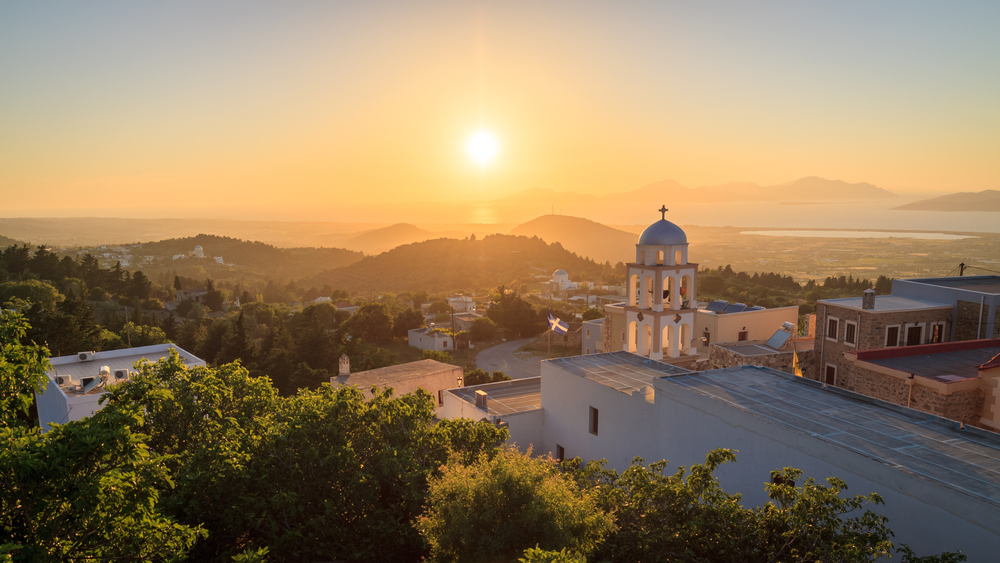The Greek island of Kos is one of the most popular holiday destinations in all of Greece, and not without reason. Located in the southern Aegean Sea, near Turkey, the island is very sun-drenched and attracts all those who like to relax on the beach. In addition, it is teeming with ancient cultural sites, magnificent viewpoints and picturesque places that invite you to visit. The most beautiful sights of the island of Kos are presented here.
The most popular archaeological site in Kos: the Asklepieion
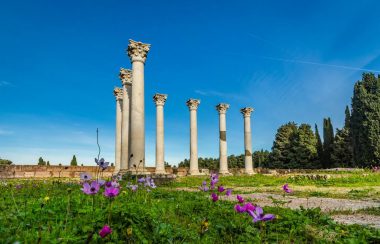
The Asklepieion is an ancient sanctuary, located only four kilometers from the island’s capital, Kos Town. Asklepieion was built on several terraced levels from the fourth century BC onwards, and was expanded again and again. From 1901, the complex was uncovered under the leadership of the German archaeologist Rudolf Herzog. The largest ancient hospital in Greece, which used to function as a therapy center and health clinic, came to light.
The oldest area, the middle level, housed the treatment rooms and a medical bath. A marble staircase connected the different levels. One level below were the patient rooms. At least the ones for people with non-contagious diseases. Patients suffering from leprosy or venereal diseases had to live in underground rooms. Remnants of the rooms in which the training for the young doctors was organized can also still be seen. Several temples in the Doric and Ionic architectural styles complement the cultural site.
The Andimachia Fortress
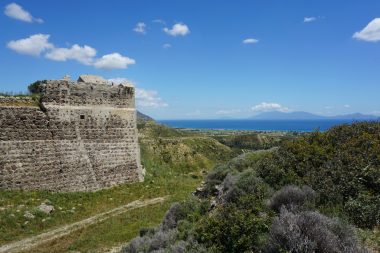
Three kilometers east of the small town of Andimachia, a medieval Johanniter fortress can be seen. It was built between 1337 and 1346. Initially, the fortress, which was positioned on a hill, served to control the sea routes. Attackers coming seaward could be spotted from here early on. In 1493, the complex was almost completely destroyed by an earthquake. The ruins, however, have survived to this day. The entrance area of the fortress is clearly visible. The outer walls are also still in a passable condition. There are also two chapels on the grounds that can still be visited: also from the inside! A beautiful view of the small coastal town of Kardamena completes the experience.
The rock caves under Aspri Petra
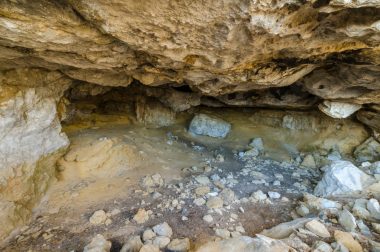
You can look deep underground in the caves of the Aspri Petra rock formation, which translates as “White Stone”. The caves on the Kefalos peninsula were discovered during excavations that took place here in 1922. A gravel road leads from Kefalos in the direction of Aspri Petra. The last part to the rock caves has to be mastered on foot. The caves used to be inhabited. Some traces of it can still be found there today. In 1922, numerous utensils from the third century BC were found in the caves. The site is freely accessible at all times, but it is especially beautiful in the evening hours, when visitors from Aspri Petra have a fantastic view of the setting sun off the west coast of Kos.
The Roman Odeon
A very special experience is certainly a visit to the Roman Odeon during an open-air event. Although this Roman theatre dates back to the second century AD, events such as concerts, plays or readings still take place here during the summer months. This shows how well the Odeon has been preserved. From Kos Town, it is only a few meters on foot, past the harbor, to the ancient building. Some rows of seats are still original. Others have been faithfully reproduced. If you only want to come to the Odeon to visit, you can do so at any time of the day or night. During the day, those who want to learn more about the history of the building come here, because a small museum has now been housed in the basement.
The ghost village of Palio Pyli
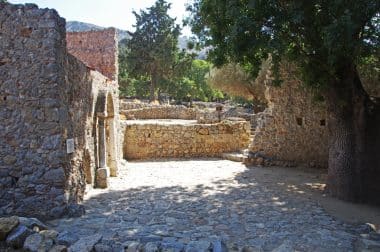
Even today, there is a village called Pyli on Kos. It was built in the immediate vicinity of its original older brother, Palio Pyli, on the northern slope of the island mountains. The heart of the village is a Byzantine fortress, which dates back to the 11th century and was held as a fortress against pirate attacks. First there was the castle, the village followed from the 15th century. The ruins of the village can be walked freely. Usually, the place is quite deserted. This may be due to the fact that nature slowly overgrows the stones and paths and you have to fight your way a little from stone to stone. However, the incomparable view of the northern part of the island of Kos compensates for all the hardships. By the way, Pali Pyli was abandoned around 1830. The reason for this is said to have been a cholera epidemic that caused people to flee their village. The new village of Pyli was later built by these villagers.
The Tigaki Saltworks
In the far north of the island, about 15 kilometers from Kos Town, the Tigaki Saltworks enchants. This is a nature reserve lake on which salt was mined until the 1990s. Salt production has a long tradition in Greece. It was already started in ancient times. In the process, the water of the shallow salt lakes evaporates: salts and minerals remain, which are mined with rakes. Even today, this has a very positive effect on people’s organisms. If you have breathing problems, a visit to the salt works is highly recommended, as the air here is still very salty and clears the respiratory tract. In addition, many bird species and flamingos settle here, which can be observed in their natural habitat.


